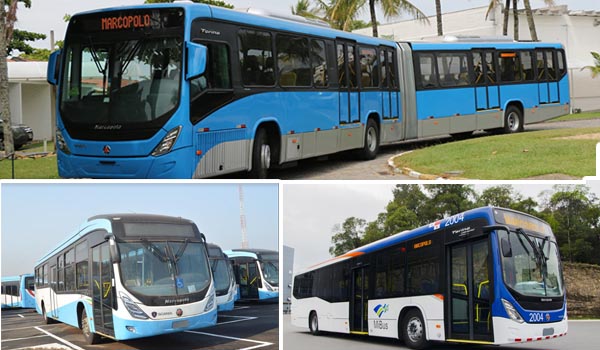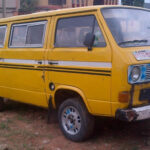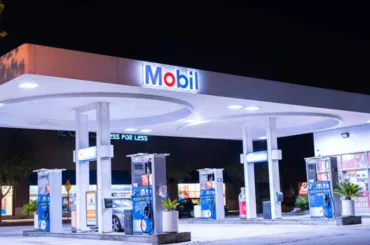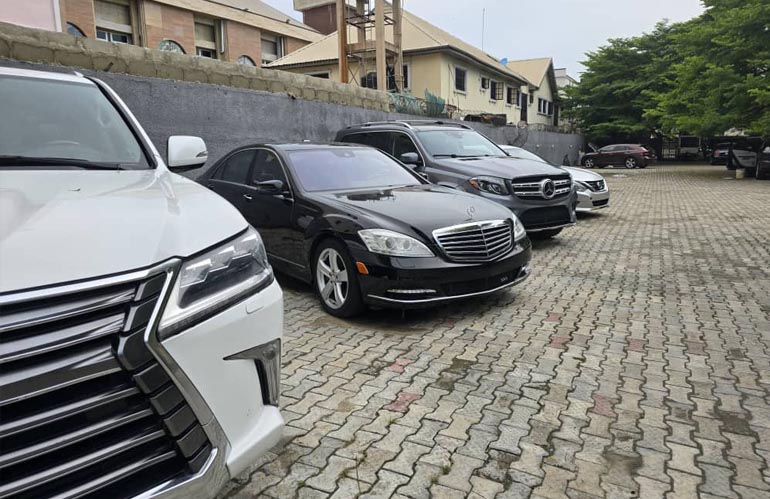In Lagos, the major means of transportation are the Danfo and BRT buses. The former are Volkswagen T3 buses painted black and yellow, while the BRT buses are painted blue and are operated by Mercedes Marcopolo.
Table of Contents
Over the past 20 years, Lagos has had to make numerous investments in its transport infrastructure to accommodate its growing population. In 2008, it launched the first BRT system in Africa. Today, the system has two lines that cover over 35.5 kilometres of track and can transport over 350,000 commuters a day.
Since the implementation of the BRT in 2008, the city of Lagos has been able to reduce its travel times by over one-third. This has resulted in an estimated savings of over 105.8 billion naira annually.
The city of Lagos, the 7th largest economy in Africa has created a brand name for itself as a city of the yellow and black buses popularly known as Danfo’s. With the introduction of BRT buses in 2008 on the roads in Lagos, there is now an increased variety for commuters to choose from.
The Danfo became the main means of commercial transportation in Lagos back in the 80s because it could ply virtually all bus routes including the inner streets. Its slender figure and quick handling made it desirable for most drivers/owners who sought to go into the transportation business.
The first set of Danfo buses in Lagos were mainly Volkswagen Kombi buses that could convey twelve passengers at a time.
On 17 March 2008, Lagos state opened the first Bus Rapid Transit (BRT) system on the African continent. The BRT system initially operated from Mile 12 through Ikorodu Road and Funsho Williams Avenue (formerly Western Avenue) up to CMS. But more recently, it has expanded its operation to twenty-six routes.
The BRT system in Lagos has been upgraded to receive digital electronic payment and access control. Other improved features added to the new BRT Buses are:
- Digital Payment: you can now pay digitally for your ride to your desired destination using the cowry card,
- Fully Air-conditioned system: there are functioning air conditioners in the buses to aid a smooth and comfortable journey and the seats are well arranged for convenience.
The challenge of urban mobility in Lagos
Up until the year 2008, Lagos was one of the only major world cities without any formalised mass public transit system. Shared transportation was predominantly provided by a fleet of 75,000 privately operated minibus services (danfos) together with a smaller number of midi-buses (molue), tricycles popularly known as Keke napep, motorcycles (Okada) and shared taxis These informal minibuses accounted for around 69 per cent of all motorised trips back in 2008 and were, as they still remain, characterised by their lack of safety standards, limited regulation, poor maintenance, the poor security and frequent violation of traffic laws. Planted on congested streets with slow speeds and highly uncertain commute times, they were not enough to truly transform the mobility and efficiency of the city, Informal minibuses accounted for around 69 per cent of all motorised trips back in 2008, as they still remain, characterised by their lack of safety standards, limited regulation, poor maintenance, the poor security and frequent violation of traffic laws
- High cost, low-quality service
Almost all of the issues of the danfo and molue services are exemplified through their poor-quality infrastructure: badly maintained buses, uncomfortable seating arrangements, breakdowns, accidents, and few considerations for customers anywhere across the system. Couple this with the system’s unreliability and lack of regulation and passengers are left with a low-quality, high-cost service.
Fares regularly vary depending on the time of day or even on weather conditions. For instance, passengers can pay up to nine times more between the peak hours of 6:30 am-8 am compared to 9 am.7 Furthermore, many of the less profitable routes are underserviced, thus leaving many citizens behind. Without any alternative to danfos before 2008, traffic and transport were highly unpredictable – only serving to reinforce poverty.
- Lack of safety and security
Accidents and passenger safety have been a major concern of informal transport in Lagos, often because drivers engage in reckless activities such as speeding, and overlapping, and it is estimated that around 2008, there would be 2-3 accidents per week on the danfo system.
Unlike the BRT buses that are big in size, Danfo’s can cover almost any route within the state and that’s a superior advantage they possess for mass transportation. Both buses have their advantages but many passengers would rather take a BRT bus when going on a long-distance route.
You don’t have to be stranded when commuting, with our money transfer options, you can transfer money from your FirstBank account to designate /accredited merchants that offer payment for BRT services. Happy commuting around Lagos.
Successful outcomes of the BRT reform
- Employment:
The Lagos BRT reforms generated 2000 direct new employment opportunities for drivers, bus conductors, ticket sellers and mechanics. Moreover, transferring over to the formal system offered operators on the pre-existing danfo services a more stable, formalised
career path. It is estimated that a further 10,000 jobs were indirect.
- Affordability
The Lagos BRT system has been able to maintain affordable fees for customers. Following the BRT’s introduction, one-off fares in Lagos actually decreased by 30 per cent, from 140 Naira to 100 Naira,30 helping to bring in low-income passenger groups. From the Mile 12 to Ikorodu BRT corridor the average monthly spend by individuals on bus travel halved.
- Reduced congestion
Even though BRT buses only accounted for around 4% of vehicles on Lagos’ roads in 2009, it has been estimated that across the whole transport system, average vehicle journey times were reduced by 40% and average waiting times by 35%.
- Financial Sustainability
Operators can deliver their service without relying on financial government assistance. It is self-sustaining even with the 30% reduction in fees received by the user.
- Safety benefits
The operation of the BRT and reduction of bad habits among danfo operators has contributed to a reduction in accidents from 139 to 96 accidents per 100,000.
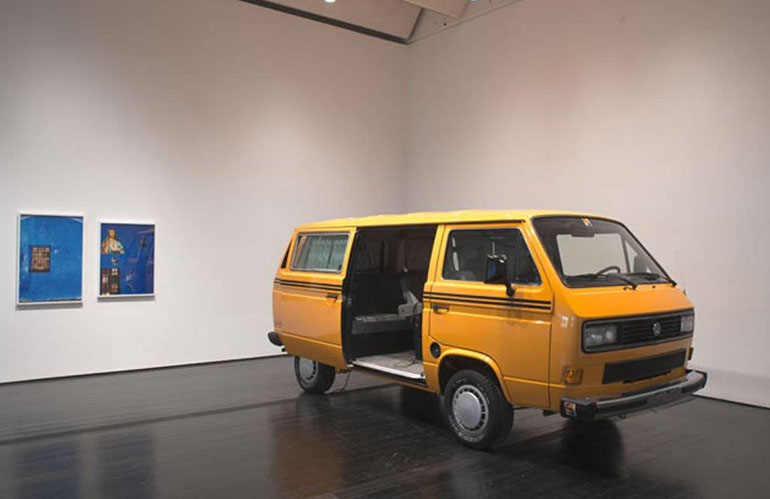
Differences between regular BRT and ‘BRT Lite’
| Full Systems | Lite Systems |
|---|---|
| Advanced technologies to manage traffic signalling & provide information | Less technological intensity |
| — Specific lanes exclusively designated for BRT buses | Partially segregated lanes for BRT buses |
| Raised platforms and shelters with pre-boarding fare collection | Have simpler bus shelters and some collection on buses |
| More efficient and effective but at a financial and time cost | — Easier and quicker to implement but at the expense of efficiency |
Major reforms often require a shift in political strategy to enable effective change. For Lagos’ transport sector, this process was largely kickstarted in 2000 with the inauguration of the Lagos State Traffic Management Authority (LASTMA). LASTMA was mandated by the Lagos State Government to improve the enforcement of traffic laws, set new standards and rulings, and encourage compliance among road users. Although it initially did not include any provisions for public transport, its establishment marked a behavioural shift within politics and society that collectively strived for better performance in urban mobility
Have 1 million naira and above to Buy or Sell Cars In Nigeria? Check carlots.ng
All rights reserved. Reproduction, publication, broadcasting, rewriting, or redistribution of this material and other digital content on carmart.ng is strictly prohibited without prior express written permission from Carmart Nigeria - Contact: [email protected]


